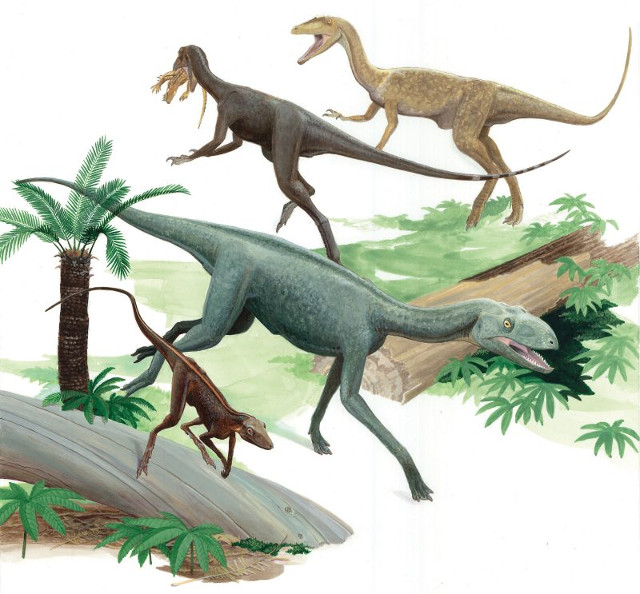
An article published in the journal “Nature” reports a study on Dromomeron gregorii, an archodon reptile that lived just over 210 million years ago, in the Triassic period. A team of researchers subjected recently discovered fossil skulls of this species to a micro-CT scan to reconstruct the structure of their brains and sensory systems. This allowed them to detect many similarities with pterosaurs that, together with other anatomical similarities, convinced them that they’re the ancestors of these flying reptiles.
Fossils of Dromomeron gregorii, a species classified as part of the Lagerpetidae family, have been discovered since the 1930s. However, originally that taxonomic family was considered related to dinosaurs, not pterosaurs and, mainly due to the incompleteness of the known specimens, only in recent years in-depth studies were carried out which have established the genus Dromomeron and its species.
Dr Martín Ezcurra, lead author of the article, explained that since the discovery of the first fossils of pterosaurs in the 18th century, anatomical features very different from those of other reptiles were observed. They had membrane-formed wings supported by the fourth finger of their hand, which was extremely developed. Their origin remained mysterious for a long time, but perhaps the closest terrestrial relatives of pterosaurs have now been found.
Studies on various species of the Lagerpetidae family led to note that the length and shape of their bones was similar to that of pterosaur and dinosaur bones. However, they were still considered closer to dinosaurs. The discovery of new fossils and the studies conducted on them seem to lead to different conclusions.
These reptiles were small and lived throughout the Triassic period. To examine the fossils of Dromomeron gregorii, which have fragile skull bones, the researchers subjected them to a micro-CT scan that allowed them to create a 3D reconstruction. The internal form offers information on the structure of this reptile’s brain and also on the sensory capabilities based on the development of the brain parts that control the various senses.
The reconstruction obtained with the micro-CT scan allowed the researchers to identify several features in common with pterosaurs. In particular, the part of the cerebellum called the flocculus is highly developed in both Dromomeron gregorii and pterosaurs. This was interpreted as an evolutionary adaptation that gave them a greater ability to process information, which includes coordination between the eye and other parts of the body, crucial to develop skills such as flying.
Sterling Nesbitt, one of the authors of this article and other past articles reporting research on pterosaurs, stated that a lot of information on primitive pterosaurs is still missing. For example, we don’t know the transformations of the skeletons that made it possible to develop the ability to fly.
The researchers also intend to continue the field work, in the hope of finding new fossils. A stroke of luck could offer valuable new insights into the history of pterosaurs.


